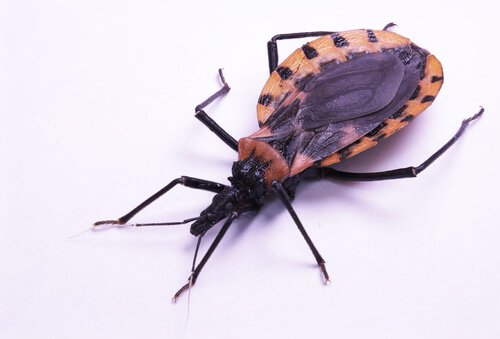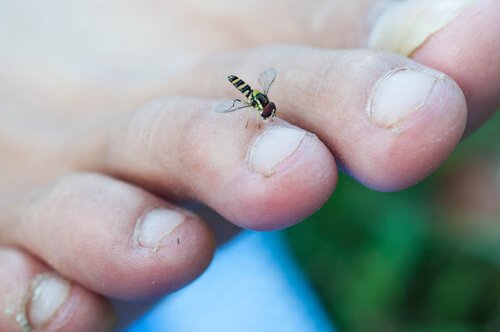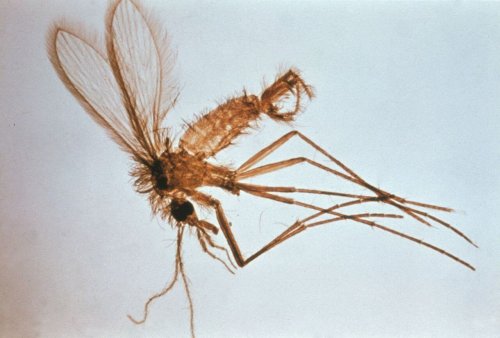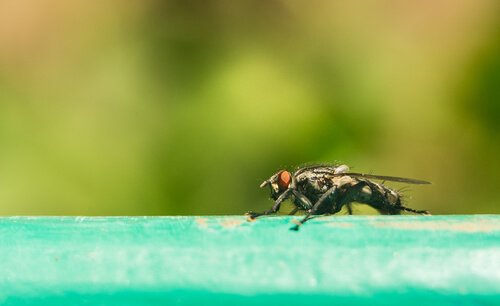Diseases Transmitted by Insects

The amazing world of insects still holds many secrets that we’re yet to discover. It’s common knowledge that some of its members tend to be disease vectors in humans and other animals. On this note, today we’re going to talk about diseases transmitted by insects.
Insects as disease vectors
Dengue, Zika, Yellow Fever, Chikungunya, Malaria or Nile fever are some of the illnesses that certain species of mosquitoes transmit and they’re responsible for a large number of human deaths throughout the world every year.
But beyond the diseases transmitted by the mosquito, there are many other disease vector insects in different regions of the world where the common denominator is usually the poor living conditions of the population.
Chagas disease is among the illnesses transmitted by insects. This is also known as American trypanosomiasis. It transmits mainly through the feces and urine of the Triatominae, better known as kissing bugs.
Although Chagas is a localized disease, especially in the continental area of Latin America, some estimates show that the more than six million people infected also live throughout North America and in some countries of Europe and the Western Pacific. Unfortunately, there’s no vaccine for it yet.
More about Chagas disease
This condition can be lethal and is caused by a protozoan called Trypanosoma cruzi. In the acute phase, which is often asymptomatic, with nonspecific signs, these microorganisms can circulate around the blood in large numbers.

When the illness reaches a chronic stage, these parasites can cause irreversible damage to the nervous system, the digestive system, and even the heart. There’s also a risk of sudden death due to arrhythmias and heart failure.
During the day, kissing bugs remain in the cracks or holes of houses that are precariously built. Then, they come out at night and feed on their victims’ blood. As if that wasn’t enough, these rude creatures proceed to defecate near the bite right after feasting.
And, although the amount of blood they take out of you won’t kill you, an infection does occur if the victim scratches the bite and spreads the feces towards the bite wound. Or even towards their mouth, eyes or any open skin wound.
Furthermore, it’s also passed on via blood transfusions, organ transplants, from mother to child during pregnancy, and through ingestion of contaminated food or drinks.
The diseases transmitted by insects are many and varied. Continue reading for details about some of these.
A disease transmitted by black flies

Onchocerciasis, or river blindness, is another disease transmitted by insects. It’s caused by the nematode Onchocerca volvulus, which is spread through the bite of infected female black flies.
Simulium blackflies breed in rivers and streams in tropical areas, where the population’s main occupation is agriculture. When they bite infected humans, they ingest, along with the blood, the parasites that they then transmit to other people.
Their larvae (microfilariae) move through the subcutaneous tissue and lodge, above all, in the skin and in the eyes. Those affected suffer from itching, and skin and eye lesions that can cause several different vision problems and can even lead to blindness.
This illness is common in Sub-Saharan African countries. But, there are also cases in Yemen, Brazil, and Venezuela. Tragically, there’s no known vaccine to prevent it.
Leishmaniasis, another disease transmitted by insects
More than 90 Phlebotominae species, approximately, are responsible for transmitting Leishmaniasis through a protozoan of the genus Leishmania. The disease is present in different areas of Asia, Africa, America, and Europe.

These hematophagous insects, which belong to a subfamily of Nematode Diptera of the family Psychodidae, spread infections through their bites. This is a disease that mainly shows itself in the following three ways:
- Cutaneous Leishmaniasis. The most frequent one of all. Furthermore, those affected have skin lesions and ulcers that scar them for life.
- Visceral Leishmaniasis. This is fatal if left untreated. Moreover, victims have irregular episodes of fever, weight loss, hepatosplenomegaly (the simultaneous enlargement of both the liver and the spleen), and anemia.
- Mucocutaneous Leishmaniasis. This one causes the total or partial destruction of the mucous membranes in the nose, mouth, and throat.
Details on sleeping sickness
Also called human African trypanosomiasis, this illness is the result of the bite of the tsetse fly, which is native to Africa. It is a disease of the tropics, and potentially fatal if not treated.
Generally speaking, it’s the work of two types of parasites: Trypanosoma brucei rhodesiense and Trypanosoma brucei gambiense.

The bite of the tsetse fly produces a flushed ulcer. As time goes by, different symptoms can develop. Among them are:
- Fever
- Swelling of the lymph nodes
- Muscle and joint pain
- Headache
- Irritability
As the disease progresses, the central nervous system gets out of control and this leads to personality changes, alterations of the biological clock, convulsions, and problems moving and speaking.
This text is provided for informational purposes only and does not replace consultation with a professional. If in doubt, consult your specialist.